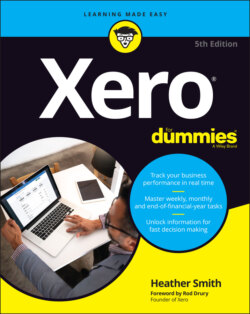Читать книгу Xero For Dummies - Heather Smith - Страница 86
Purchases
ОглавлениеOnce Xero is set up you can make payments against outstanding bills, so they need to be imported into Xero so you can reconcile them when the money is paid. Note: Xero groups the bills you receive under the Purchases area (see Chapter 7 for more details).
Australian and New Zealand users have the option of importing MYOB Service and Item Purchase bills exported directly from MYOB.
Follow these steps to import purchase details into Xero:
1 From the Xero Dashboard go to Business → Purchases Overview and click the Import button.The Import Your Bills window opens.
2 Click the Browse button to select the required file and then click the Import button.For example, you could select the BillsImport.csv file from the DataReadyForImporting folder in the CONVERSION folder.Before you import your purchases details, you need to answer two questions about the file. Select Yes or No to ‘Would you like to update contact address details?’, and define whether the UnitAmount field is Tax Exclusive or Tax Inclusive.Clicking the Import button displays a report on the impending import process in the Import Your Bills window.
3 Review the report integrity.The import action can’t be undone if you proceed, though once imported the draft bills can be bulk deleted if you make a mistake. If further editing of the data is required, click the grey Go Back button and review the imported data file.
4 Once satisfied, click the green Complete Import button to import the data.The imported bills are imported in Draft status and now display in Xero. You have the opportunity to enter additional data in each bill, and approve them as outstanding. (See Chapter 7 for how to deal with draft bills.)
5 Enter Debit Notes.Debit Notes or negative bills can be imported in the same way. See Chapter 7 for information on entering credit notes. Note: Xero refers to both debit notes and credit notes as credit notes — don’t get confused!
6 Manually update any imported records where the consumer tax wasn’t the standard rate.Find the imported invoices, click on them and update their details to reflect the correct allocation of consumer tax. See Chapter 7 for information on editing bills.
7 Correct any issues by sorting out individual issues or deleting and re-importing the data.The imported bills only have a single line of transactional details. If you need to add additional detail, such as a different Due Date or additional transactional information, locate the invoice, click on it to edit it, and save it.To delete a draft bill you don’t need, click the check box to the left of it and click the red Delete button.See Chapter 7 for information on locating and editing bills.
8 Check the import balance matches the balances of data imported.
9 Approve bills individually or as a batch.See Chapter 7 for details on approving supplier bills.
An alternative to importing bills is to use a bills and expenses add-on solution such as Dext, Lightyear, or Datamolino. You scan the bills and submit the scans to the add-on solution, which extracts the core details and pushes them into Xero. Such add-on solutions normally have a 14-day free trial, which allows you to check out whether you’d like to use the add-on for your business.
